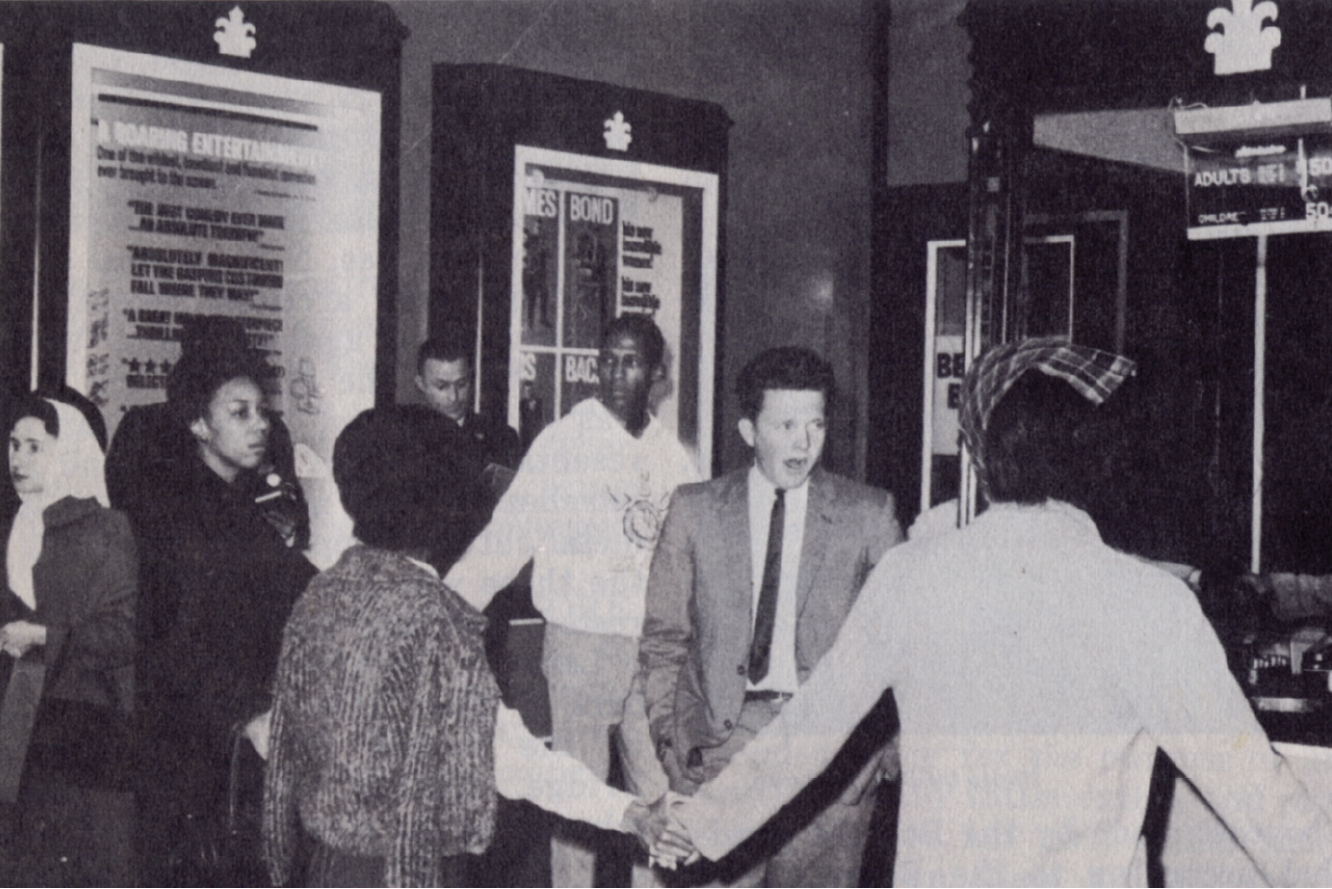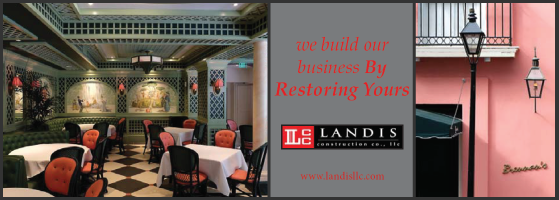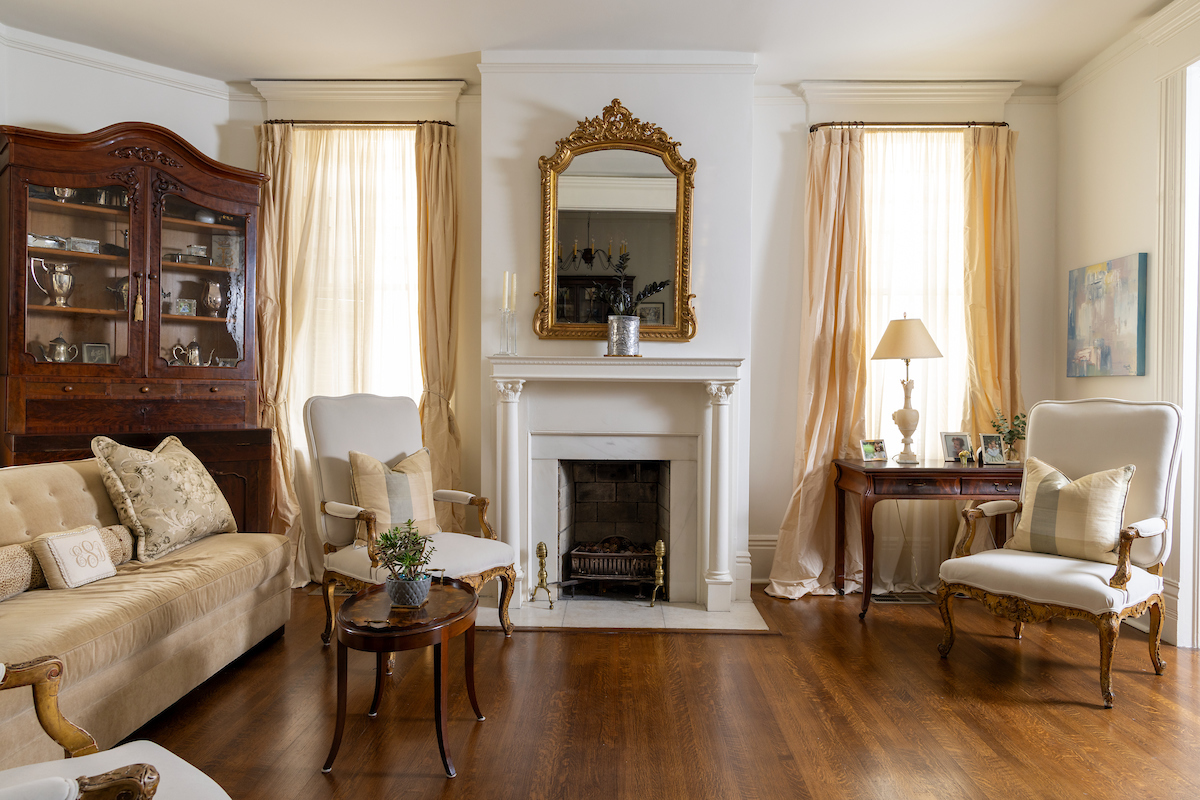This story first appeared in the September issue of the PRC’s Preservation in Print magazine. Interested in getting more preservation stories like this delivered to your door each month? Become a member of the PRC for a subscription!
The idealized history of Canal Street conjures images of grand department stores, magnificent movie palaces and the crescendo of every major Carnival parade. For decades, Canal Street was the central artery of New Orleans; it is only fitting that the corridor represents the best the city has to offer — the rollicking pomp and circumstance of Mardi Gras — and the worst — a complicated history of racial discrimination and cultural discord that is still felt today.
During its long and complicated history, Canal Street has served as a fortification, a commercial corridor, a cultural barrier between Francophone and Anglophone New Orleans and a racial dividing line between black and white that played host to both violent conflicts and peaceful protests, before settling into its current role as an area undergoing massive changes in the form of new construction, restoration and adaptive reuse projects.
There is a common misconception that New Orleans’ race relations were leaps and bounds ahead of the rest of the South during the Civil Rights Movement. This myth was perpetuated by the city’s mayor at the time, deLesseps Story “Chep” Morrison. In the spring of 1960, after students at Dillard University took part in an on-campus demonstration to protest racial segregation, Morrison maintained that New Orleans had “good race relations” and that white government officials strove to “create and maintain a climate for the realization of greater economic opportunity…within the framework of existing State laws and customs,” or, to put it bluntly, within the framework of Jim Crow.
In 1960, Canal Street would become the city’s frontline for Civil Rights demonstrations to end racial segregation in all privately and publicly owned places: stores, lunch counters, public parks, transit, city-owned facilities, etc. The Canal Street neutral ground would play host to a clash of cultures and ideology regarding race relations.

A group pickets outside the Loew’s State Theatre. Image from The CORE-lator, March-April 1964, courtesy of the Amistad Research Center.
In July 1960, two Southern University students, Oretha Castle and Rudy Lombard, founded the New Orleans chapter of the Congress of Racial Equality (CORE). Castle and Lombard were first exposed to activism during the successful campaign to integrate the workforces of Dryades Street corridor stores, which were owned by whites and frequented by blacks. By the summer of 1960, only one Dryades area store continued to refuse to hire blacks for anything other than menial jobs.
Following the successful Dryades Street protests, Civil Rights leaders turned their attention to integrating Canal Street. On Sept. 9, 1960, seven CORE members staged the first locally organized sit-in at the Woolworth’s department store lunch counter. All seven demonstrators were arrested. The following day, the NAACP Youth Council began picketing Woolworth’s. After four years of demonstrations, in July 1964, an integration agreement had been reached with 25 downtown retail establishments, including Krauss, one of the five large department stores. The remaining four of the big five — Holmes, Maison Blanche, Marks-Isaac and Sears — refused to integrate until the passage of the 1964 Civil Rights Act required that they do so.
The site of the first Canal Street sit-in, the Woolworth’s building, at the corner of North Rampart and Canal streets, was demolished in 2014. Plans to build an 18-story, 350-room Hard Rock Hotel were announced in February 2018. There are no plans to commemorate the site’s significant role in the New Orleans Civil Rights movement.
Oretha Castle served as the chairwoman of New Orleans CORE from 1961 to 1964. During her tenure, CORE began to picket theaters and public facilities to achieve desegregation. One of her most effective demonstrations took place at the Loew’s State Theatre, located diagonally across Canal Street from the Woolworth’s building.
Advertisement
In November 1963, New Orleans CORE began picketing three Canal Street theaters to integrate their facilities. As there had been no significant progress by March 1964, they began to develop innovative ways to get their demands noticed. On Good Friday of that year, a group of CORE members arrived at the ticket window of the Loew’s State Theatre and attempted to purchase tickets. As each member was turned away, they stepped back and linked hands around the ticket booth, forming a “Freedom Ring” around the box office. When the police tried to make the group disperse, they sat down, hands still joined. Each demonstrator was promptly arrested for “obstructing passage” or “refusing to move on.” The dramatic imagery of the Freedom Ring was so effective that the Sonny Liston vs. Cassius Clay prizefight to be shown at the Loew’s State was moved to the municipal auditorium.
Despite its significant role in the New Orleans Civil Rights Movement, today there are various proposals for the redevelopment of the former Loew’s State Theatre building. The proposals have threatened both the character-defining interior and the contributing facade. Currently, the Central Business District Historic District Landmarks Commission’s Architectural Review Committee is evaluating an adaptive reuse hotel development for the site.
In the case of Canal Street, preservation is not just about the physical environment of the department stores, theaters and hotels; it is about the corridor’s role in the social justice history of New Orleans. The history of Canal Street is defined by the social changes that occurred in this grand community gathering space, from the popularization of the term “neutral ground” to the department store sit-ins and the movie theater Freedom Rings.
The rich past of Canal Street gives us pause to contemplate race relations in New Orleans today. It begs us to consider not only how far we’ve come but how much we still have left to do. It is crucial that we preserve the social justice history of Canal Street and the physical landscape in which it played out to serve as a reminder of the errors of the past and to inspire us all towards a better future.
is an architectural historian and preservationist based in Los Angeles. She is the recipient of the inaugural 2017 Ann and Frank Masson Graduate Research Travel Fellowship from the Tulane School of Architecture, where she received her Master of Preservation Studies in 2018. Marcum is the Business Development Manager at Historic Resources Group in Pasadena, Calif.
Advertisement








